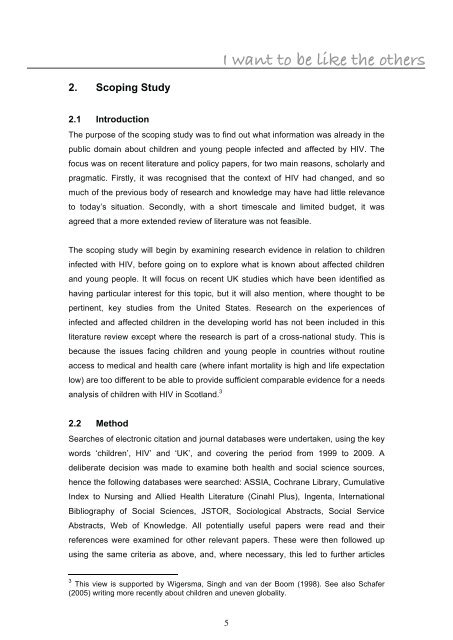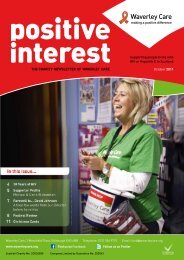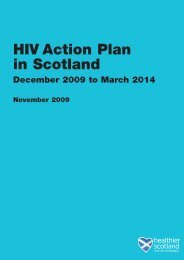I want to be like the others - Waverley Care
I want to be like the others - Waverley Care
I want to be like the others - Waverley Care
- No tags were found...
Create successful ePaper yourself
Turn your PDF publications into a flip-book with our unique Google optimized e-Paper software.
55I <strong>want</strong> <strong>to</strong> <strong>be</strong> <strong>like</strong> <strong>the</strong> o<strong>the</strong>rs2. Scoping Study2.1 IntroductionThe purpose of <strong>the</strong> scoping study was <strong>to</strong> find out what information was already in <strong>the</strong>public domain about children and young people infected and affected by HIV. Thefocus was on recent literature and policy papers, for two main reasons, scholarly andpragmatic. Firstly, it was recognised that <strong>the</strong> context of HIV had changed, and somuch of <strong>the</strong> previous body of research and knowledge may have had little relevance<strong>to</strong> <strong>to</strong>day’s situation. Secondly, with a short timescale and limited budget, it wasagreed that a more extended review of literature was not feasible.The scoping study will <strong>be</strong>gin by examining research evidence in relation <strong>to</strong> childreninfected with HIV, <strong>be</strong>fore going on <strong>to</strong> explore what is known about affected childrenand young people. It will focus on recent UK studies which have <strong>be</strong>en identified ashaving particular interest for this <strong>to</strong>pic, but it will also mention, where thought <strong>to</strong> <strong>be</strong>pertinent, key studies from <strong>the</strong> United States. Research on <strong>the</strong> experiences ofinfected and affected children in <strong>the</strong> developing world has not <strong>be</strong>en included in thisliterature review except where <strong>the</strong> research is part of a cross-national study. This is<strong>be</strong>cause <strong>the</strong> issues facing children and young people in countries without routineaccess <strong>to</strong> medical and health care (where infant mortality is high and life expectationlow) are <strong>to</strong>o different <strong>to</strong> <strong>be</strong> able <strong>to</strong> provide sufficient comparable evidence for a needsanalysis of children with HIV in Scotland. 32.2 MethodSearches of electronic citation and journal databases were undertaken, using <strong>the</strong> keywords ‘children’, HIV’ and ‘UK’, and covering <strong>the</strong> period from 1999 <strong>to</strong> 2009. Adeli<strong>be</strong>rate decision was made <strong>to</strong> examine both health and social science sources,hence <strong>the</strong> following databases were searched: ASSIA, Cochrane Library, CumulativeIndex <strong>to</strong> Nursing and Allied Health Literature (Cinahl Plus), Ingenta, InternationalBibliography of Social Sciences, JSTOR, Sociological Abstracts, Social ServiceAbstracts, Web of Knowledge. All potentially useful papers were read and <strong>the</strong>irreferences were examined for o<strong>the</strong>r relevant papers. These were <strong>the</strong>n followed upusing <strong>the</strong> same criteria as above, and, where necessary, this led <strong>to</strong> fur<strong>the</strong>r articles3 This view is supported by Wigersma, Singh and van der Boom (1998). See also Schafer(2005) writing more recently about children and uneven globality.











